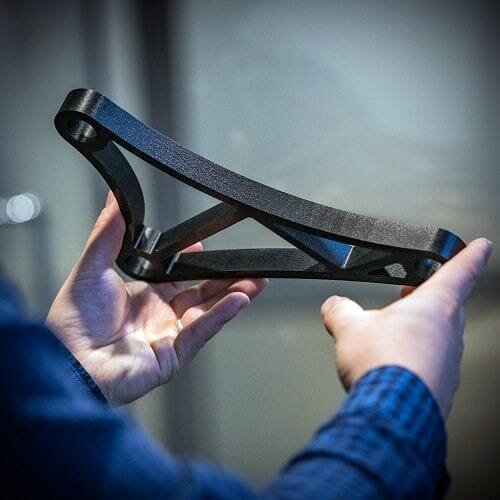![A 3D printed part certified by Aarni [Source: Minifactory]](https://fabbaloo.com/wp-content/uploads/2020/05/aarni-part_img_5eb08dc81dec9.jpg)
Aarni, a new tool from Minifactory, provides a method of performing quality control in a very unusual manner.
Quality control is increasingly important as the usage of 3D printers, particularly professional-level machines, changes. There’s plenty of prototyping still occurring, and that usage is rising. But there are more frequent instances of production end-use prints.
And these 3D prints must meet the standards required for that production application, hence increased quality measures are required.
MiniFactory Aarni
There are a number of quality control approaches one could take, but the new tool from Finland-based MiniFactory seems new, at least to me, and offers capabilities not available with other methods.
Their new system is called “Aarni”, and I’m not quite sure of the background behind the name. I asked MiniFactory about this and they explained:
“Aarni is an ancient guardian of treasure known from Finnish mythology. He will provide the treasure only for the ones who are loyal to him.”
Aarni leverages the many sensors present in MiniFactory’s Ultra professional 3D printer, the only device currently able to make use of Aarni. Normally, such sensors are used to monitor ongoing operations during a print, to, for example, ensure the temperature is consistent.
I should note that Aarni is a separately priced accessory for the Ultra 3D printer. Pricing is available from MiniFactory’s local partners.
But MiniFactory is leveraging them in a different way.
Aarni 3D Print Analysis
By recording the sensor readings at each build layer, Aarni can build up a kind of environmental profile for the entire print. They explain:
“Aarni collects data with multiple sensors during the printing process. These sensors are monitoring several temperature levels, humidity and other critical values to maintain the quality just like in traditional injection moulding.
Then Aarni uses the collected knowledge to visualize the printing environment and the actual printing layer-by-layer. This way you can inspect the printed part completely with an easy to use interface. The visualization makes sure that you don’t miss anything and first time in FFF technology, you can see inside the printed part.”
Their video shows how it works:
How exactly does this work? It seems that MiniFactory has gathered up what it believes to be the optimum environmental profiles for each of several popular engineering materials. Then Aarni uses this information to compare against the collected data from each layer of the build. If the part was built within this “envelope”, it should be high quality.
MiniFactory says Aarni can “ensure the process and part properties”, even if the part appears to be good from a visual inspection. The outside surface may not reflect what’s happening inside the print.
Aarni Part Certification?
Once a part is confirmed to have been made in optimum conditions, it is then possible to use MiniFactory’s technical data sheets to calculate the actual mechanical properties of the part.
This leads to the notion of an official certification. MiniFactory suggests that with this information it might be possible to issue a certification with the parts that could be viewed positively by clients.
I’ve not yet seen this depth of quality control for 3D printing, at least with filament-based equipment. Aarni may not be for everyone, but there certainly are 3D printing operations present that would definitely benefit from the ability to use this approach.
Via MiniFactory

